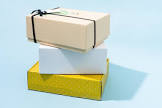
Unboxing Delight: The Impact of Innovative Packaging in Today’s Market
The Importance of Packaging in Today’s Market
In the fast-paced world of consumer goods, packaging plays a crucial role in attracting customers and influencing purchasing decisions. Packaging is not just a means to contain and protect products; it is a powerful tool that can communicate brand identity, values, and quality.
Effective packaging design can make a product stand out on crowded shelves, capturing the attention of potential buyers. Bright colors, bold graphics, and innovative shapes can create a memorable visual impact that sets a product apart from its competitors.
Moreover, packaging serves as a silent salesperson for a product. It conveys important information such as ingredients, usage instructions, and benefits to consumers. Clear and concise labeling can help customers make informed choices and build trust in the brand.
From eco-friendly materials to convenient resealable options, packaging innovation continues to evolve to meet changing consumer preferences and sustainability concerns. Brands that prioritize environmentally friendly packaging not only appeal to eco-conscious consumers but also contribute to reducing waste and environmental impact.
In today’s digital age, packaging also plays a significant role in online shopping experiences. Well-designed packaging adds value to the unboxing process, creating excitement and enhancing the overall customer satisfaction. Social media platforms are filled with unboxing videos showcasing aesthetically pleasing packages that delight consumers.
Ultimately, packaging is more than just a container; it is an essential element of branding and marketing strategies. A well-thought-out package can create positive associations with a product, enhance customer loyalty, and drive sales growth. In an increasingly competitive market landscape, investing in innovative and appealing packaging can be the key to success for businesses looking to make an impact.
Essential Insights: Understanding the Impact and Innovation of Packaging in Consumer Markets
- What is packaging and why is it important?
- How does packaging influence consumer buying decisions?
- What are the different types of packaging materials available?
- How can eco-friendly packaging benefit both businesses and the environment?
- What role does package design play in branding and marketing?
- How can companies ensure that their packaging complies with regulations and safety standards?
- What are some innovative trends in packaging technology and design?
- Why is sustainable packaging becoming increasingly popular among consumers?
- How does effective package labeling help consumers make informed purchasing decisions?
What is packaging and why is it important?
Packaging is the process of designing and creating a container or wrapper for a product to ensure its protection, preservation, and presentation. It serves as the first point of contact between a consumer and a product, making it a critical aspect of marketing and branding. Packaging plays a vital role in communicating essential information about the product, such as ingredients, usage instructions, and safety warnings. Additionally, packaging contributes to the overall aesthetic appeal of a product, influencing consumer perception and purchasing decisions. Ultimately, effective packaging not only enhances the shelf presence of a product but also helps build brand recognition, trust, and loyalty among consumers.
How does packaging influence consumer buying decisions?
Packaging plays a significant role in influencing consumer buying decisions by serving as the first point of contact between a product and a potential buyer. The design, colors, materials, and overall presentation of a package can evoke emotions, convey brand values, and communicate product quality. Eye-catching packaging can capture the attention of consumers, differentiate a product from competitors, and create a positive first impression. Clear and informative packaging can help customers make informed choices by providing essential details about the product. Additionally, sustainable and eco-friendly packaging appeals to environmentally conscious consumers, influencing their purchasing decisions. In essence, packaging acts as a powerful marketing tool that not only protects the product but also shapes consumer perceptions and drives purchasing behavior.
What are the different types of packaging materials available?
There are various types of packaging materials available to cater to different product needs and industry requirements. Common packaging materials include cardboard, paperboard, plastic, glass, metal, and biodegradable materials. Cardboard and paperboard are popular choices for their versatility and eco-friendly properties. Plastic packaging offers durability and flexibility but raises concerns about environmental impact. Glass packaging is known for its premium look and ability to preserve product freshness. Metal packaging is often used for food products due to its strength and ability to be recycled. Biodegradable materials are gaining popularity as sustainable alternatives that minimize environmental harm. Each type of packaging material has its unique characteristics and benefits, allowing businesses to choose the most suitable option based on factors such as product type, shelf life, sustainability goals, and branding preferences.
How can eco-friendly packaging benefit both businesses and the environment?
Eco-friendly packaging offers a dual advantage by benefiting both businesses and the environment. For businesses, adopting sustainable packaging practices can enhance brand reputation, attract environmentally conscious consumers, and differentiate products in a competitive market. By showcasing a commitment to reducing environmental impact through eco-friendly packaging materials and practices, businesses can build trust with consumers and strengthen brand loyalty. Additionally, eco-friendly packaging can lead to cost savings in the long run through reduced material usage and waste management expenses. From an environmental perspective, using biodegradable or recyclable materials in packaging helps minimize pollution, conserve natural resources, and reduce carbon emissions associated with traditional packaging methods. Overall, embracing eco-friendly packaging not only aligns with corporate social responsibility goals but also contributes to a healthier planet for future generations.
What role does package design play in branding and marketing?
Package design plays a pivotal role in branding and marketing by serving as a powerful visual representation of a product and its associated brand. The design elements of packaging, such as colors, fonts, imagery, and overall aesthetics, communicate the brand’s identity, values, and positioning to consumers. A well-crafted package not only attracts attention on store shelves but also conveys important information about the product’s features, benefits, and quality. Effective package design can differentiate a brand from competitors, create memorable experiences for customers, and ultimately drive purchasing decisions. In essence, package design is a critical component of a brand’s overall marketing strategy, influencing consumer perceptions and building brand recognition in a competitive marketplace.
How can companies ensure that their packaging complies with regulations and safety standards?
Ensuring that packaging complies with regulations and safety standards is a top priority for companies to maintain consumer trust and avoid potential legal issues. Companies can achieve compliance by conducting thorough research on relevant laws and regulations specific to their industry and product type. Collaborating with regulatory experts or consultants can provide valuable guidance on navigating complex requirements. Additionally, implementing robust quality control processes, rigorous testing procedures, and documentation practices can help verify that packaging materials meet safety standards. Regularly reviewing and updating packaging designs to align with evolving regulations is essential to staying compliant and safeguarding the well-being of consumers.
What are some innovative trends in packaging technology and design?
Innovative trends in packaging technology and design are shaping the way products are presented and perceived in the market. From sustainable materials like biodegradable plastics and compostable packaging to smart packaging solutions incorporating QR codes and NFC technology for interactive consumer engagement, the industry is constantly evolving. Minimalist designs, personalized packaging options, and augmented reality experiences are also gaining popularity, offering brands new ways to connect with their target audience. Embracing these innovative trends not only enhances product visibility and appeal but also demonstrates a commitment to sustainability and consumer-centric design practices.
Why is sustainable packaging becoming increasingly popular among consumers?
Sustainable packaging is gaining popularity among consumers for several compelling reasons. In today’s environmentally conscious society, more people are actively seeking products that align with their values of sustainability and eco-friendliness. Sustainable packaging helps reduce the carbon footprint, minimize waste, and promote recycling efforts, resonating with consumers who prioritize environmental responsibility. Additionally, sustainable packaging often conveys a sense of quality and ethical integrity, appealing to customers who value transparency and authenticity in the brands they support. As awareness of environmental issues grows, the demand for sustainable packaging solutions continues to rise as consumers become more mindful of the long-term impact of their purchasing decisions on the planet.
How does effective package labeling help consumers make informed purchasing decisions?
Effective package labeling plays a crucial role in helping consumers make informed purchasing decisions by providing essential information about the product. Clear and accurate labeling can communicate details such as ingredients, nutritional facts, usage instructions, expiration dates, and potential allergens, empowering consumers to assess the product’s suitability for their needs and preferences. By presenting this information in a transparent and easy-to-understand manner, package labeling enables shoppers to compare products, evaluate their quality and value, and ultimately make educated choices that align with their health, dietary restrictions, ethical considerations, or personal preferences. In essence, effective package labeling serves as a valuable tool that enhances consumer awareness and confidence in the products they purchase.


